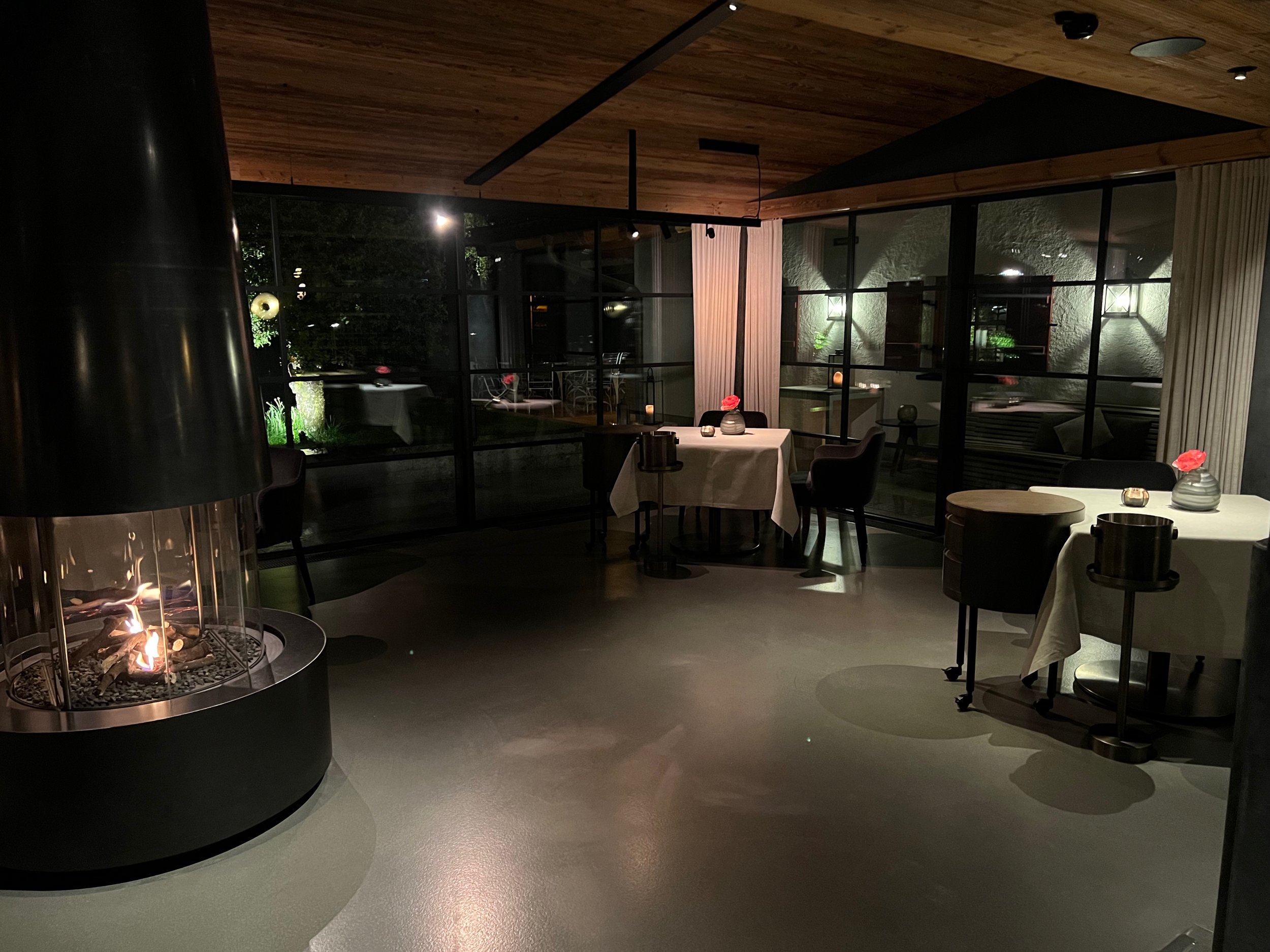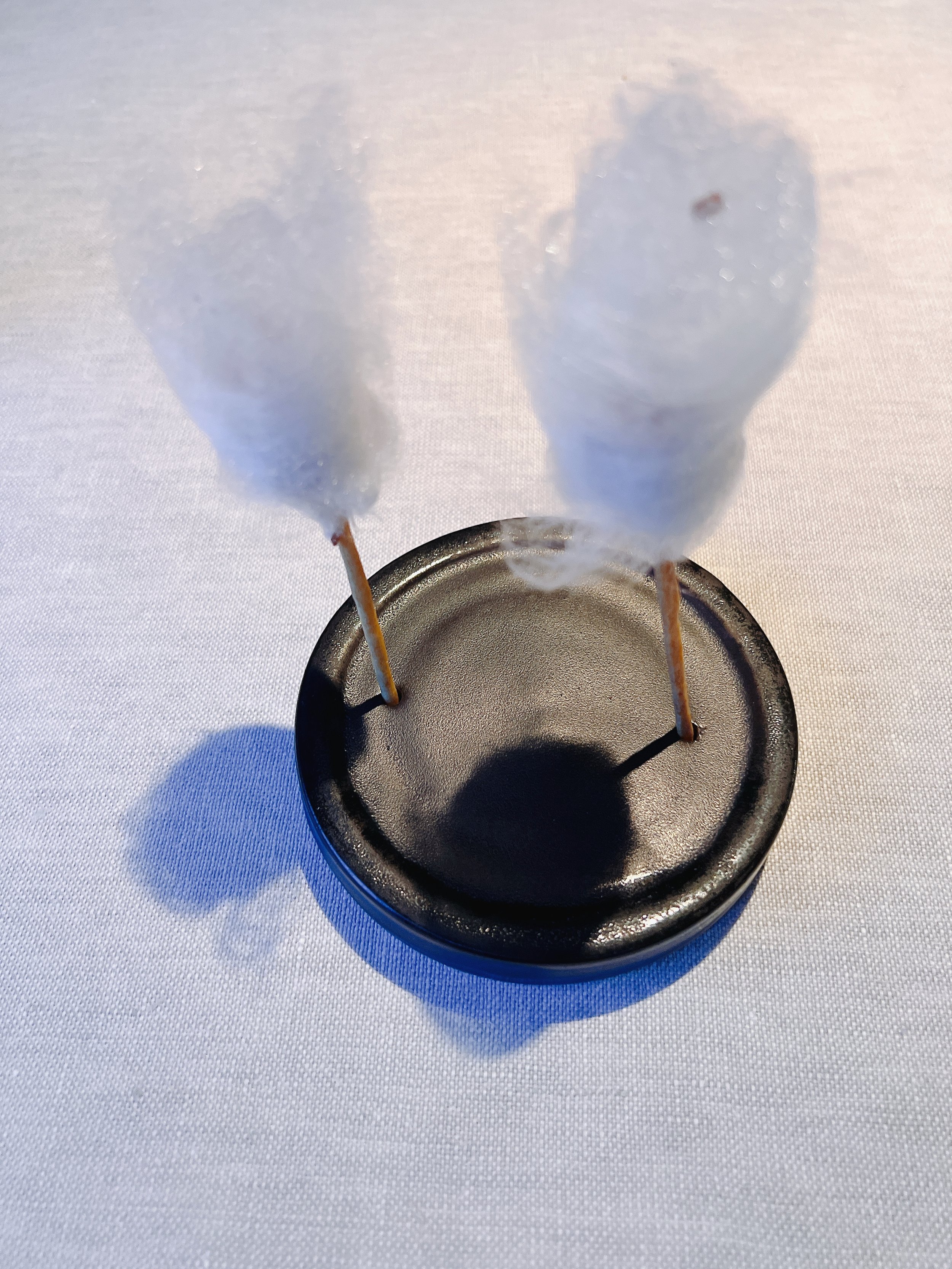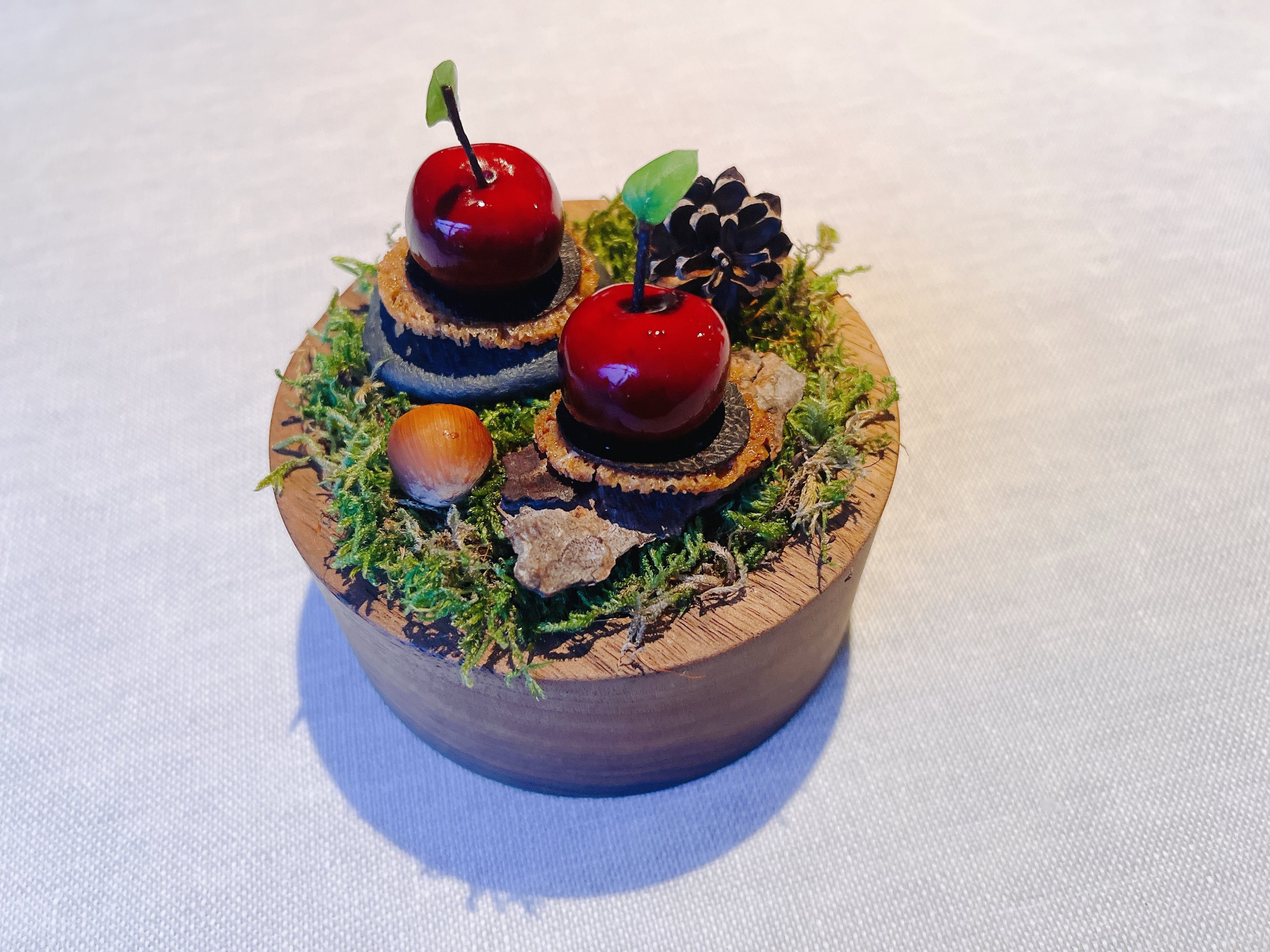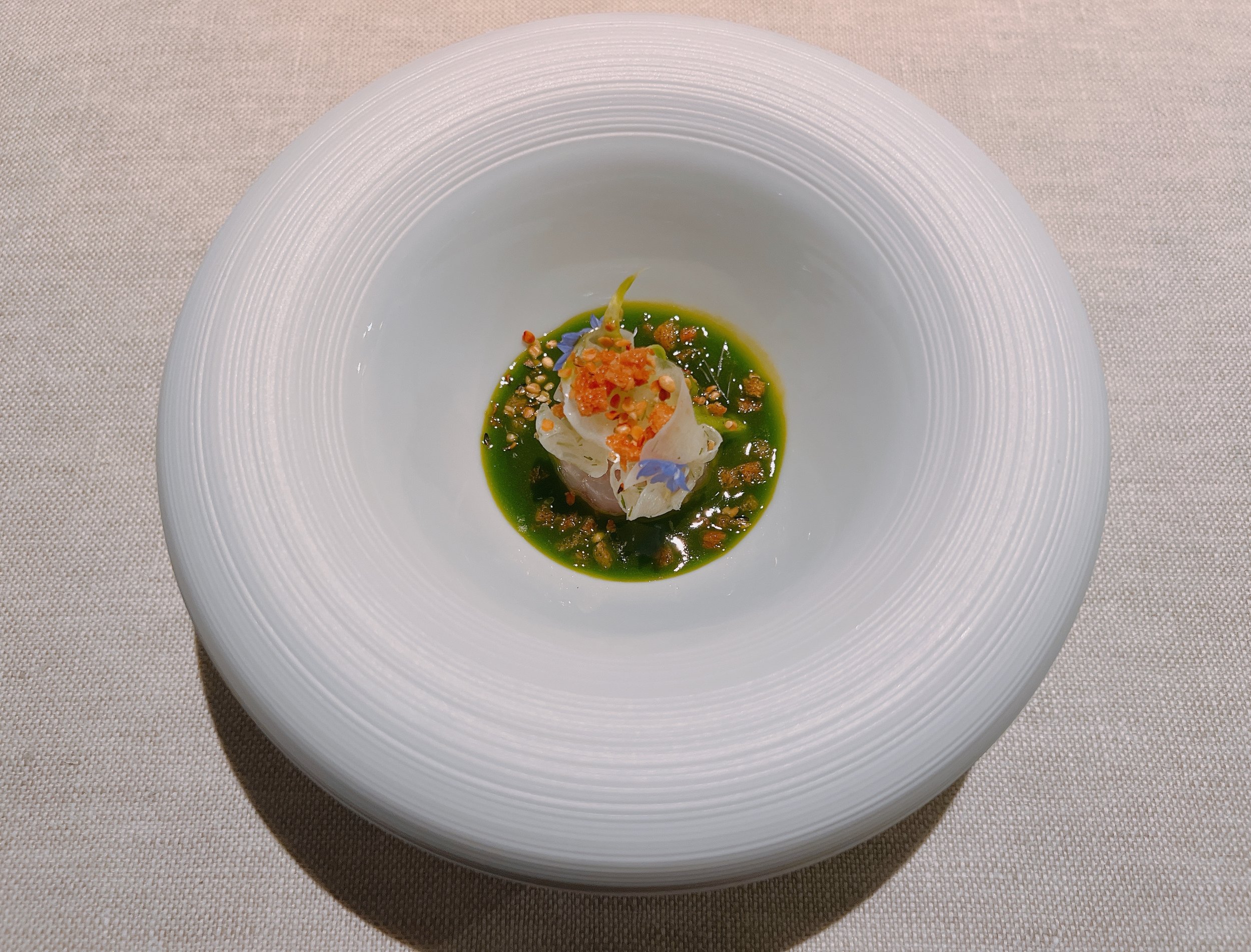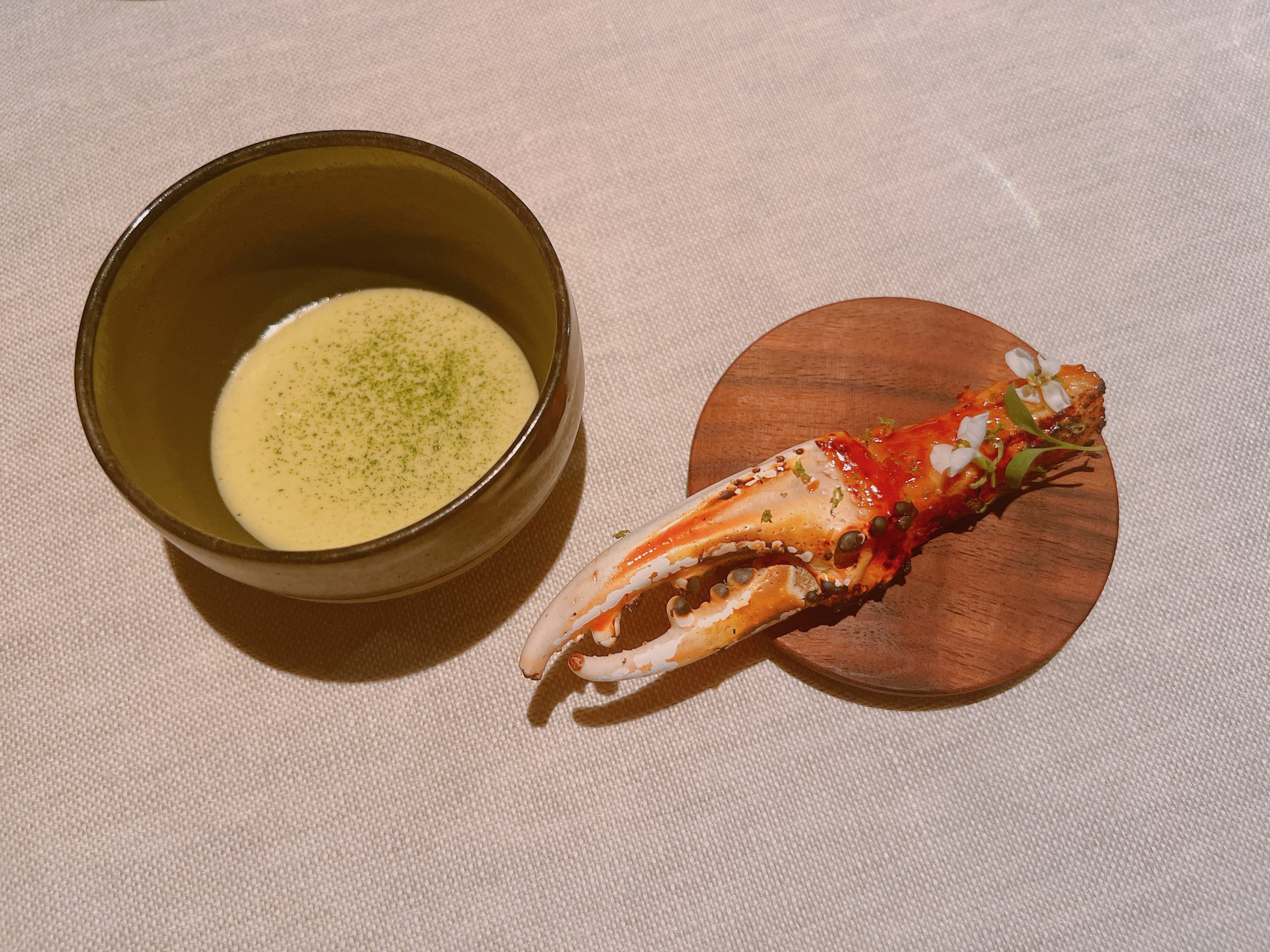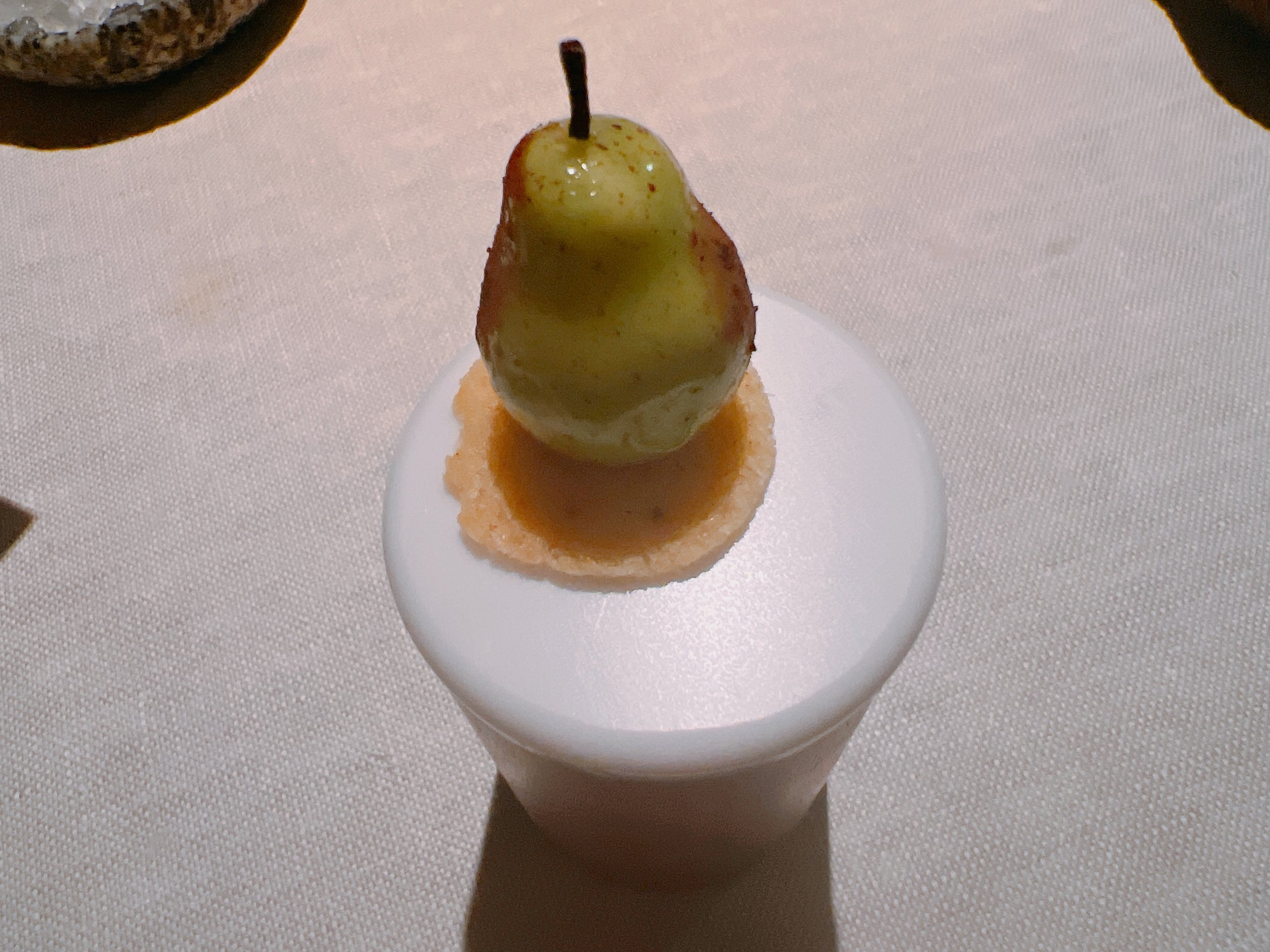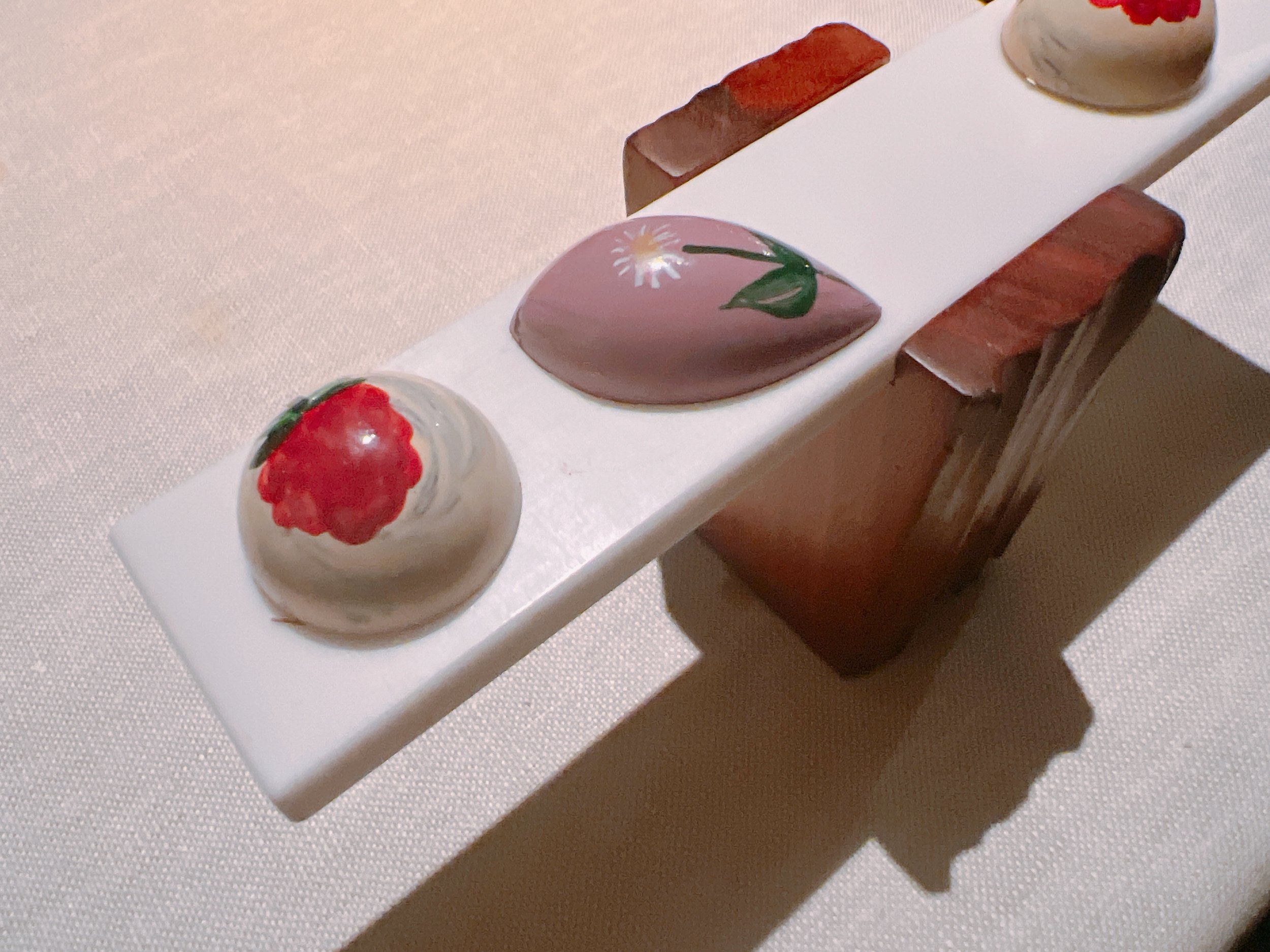ES:SENZ - Grassau
Rating: 17/20
Where: Grassau, Germany
When: Dinner for 2 on 20 April 2024
Cost per Person: Tasting menu 220-330 Euro, Wine pairing 130-150 Euro
Accolades: 3 Michelin Stars
Why: Dishes that take inspirations from local Bavarian cuisine
The requirements for becoming a three-Michelin-starred restaurant in Germany lately seem to include not just excellent cooking, but also creative spelling, to wit: “schanz. restaurant.” (lower-case, periods), “JAN” (all caps), followed by this year’s entrant ”es:senz”. The latter is located in Bavaria, near the Chiemsee and close to the Austrian border. Driving from Munich takes about an hour, and maybe 45 minutes from Salzburg. The restaurant is part of the five-star hotel “Das Achental”, a nice place to stay after dinner.
For me, this was the second day in a row where I almost missed my dinner reservation. Among the lowlights: a Lufthansa plane with mechanical issues had to be replaced, causing a three-hour delay, and a freak hail- and snowstorm turned the A8 autobahn into a slippery parking lot. It was touch and go for the whole day, but we made it to the restaurant “only” 15 minutes past the last reservation time. Luckily, the staff already knew about the highway closure and we were not the only guests showing up late.
Once we sat down, we were finally able to relax and spend some time to take in our surroundings. Das Achental hotel had a bit of a rustic Alpine vibe, but little of that was noticeable in the modern dining room. White table cloths, flower vases and tealights gave the tables a bit of formality. Service was also formal but relaxed, and the chef himself stopped by our table to present the petit fours.
There were two tasting menus to choose from. The menus shared the amuse bouches (which started to arrive before we even had a chance to order) and the petit fours. A six-course menu was focused on local produce and dishes, whereas an eight-course menu had more international influences. We went for the latter, mainly because it was longer. Wine pairings were available for both menus. The wines were pretty good, with generous pours that were always topped off. Not every course came with a wine though - for example, there was only one wine for all the desserts.
To begin, we were served a complimentary glass of champagne to celebrate the recent win of the restaurant's third Michelin star. A long series of amuse bouches showed up soon thereafter. The common theme among these early bites seemed to be subtle Bavarian influences, referencing the region that we were in, the Chiemgau.
The first four amuses were served at the same time. First, we had cotton candy that was wrapped around vinegar jelly, some speck and an edible stick. The initial taste here was of the sweet spun sugar, but that quickly transitioned into big flavors of vinegar and bacon. Very nice, starting the dinner with a bang 19. What looked like a cherry turned out to be a duck liver bonbon. It was seasoned with a bit of cherry and sat on top of a bread chip. The whole object was edible, including the stem. Unfortunately, it was much less flavorful than the preceding cotton candy. Creamy from the liver, but only lightly sweet, and crunchy from the bread chip. Nice enough 15. A bite of eel, onion and horseradish was a bit stronger in flavor. The eel was a tad smoky and meaty, while the onion added a touch of sweetness. I couldn't really taste the horseradish, unfortunately 16. Finally, a meringue was topped with veal tartare and caviar. Oddly, this bite seemed to have an herbal taste - not sure from what, though. The tartare was quite creamy. Again, pleasant 15.
Next came es:senz' take on a Bavarian “Brotzeit” (a snack consisting of bread with assorted savory toppings). A potato sourdough bread felt a bit generic with a light crunch 14. A rosemary brioche was also a bit plain - I could hardly taste the rosemary 13. Whipped butter was served with a mustard vinaigrette. Since mustard is a classic ingredient of a Bavarian Brotzeit, this was a nice nod in that direction. Truly amazing was the so-called “herb garden”: a wild garlic cream that was topped with radishes and lots of herbs. Very flavorful, tasty and herbal, with a tiny hint of spice - the perfect spread for the warm bread 19. An unusual side dish were “Chiemgau olives”. Germany is too cold to grow real olives, so these “olives” were actually Cornelian cherries that had been preserved like real olives. As a result, they were sour, with a hint of fruitiness, but with no sweetness whatsoever. Almost like an olive then, and with a longish pit to boot. Neat 16. A slice of tomato was served over cream cheese, and was adorned with samphire, oregano and a tomato vinaigrette. This dish was quite sour (from the vinaigrette), but also had an intense tomato flavor (also mostly from the vinaigrette). The house-made cheese added some nice creaminess. Yum 17.
Two more amuse bouches were shared by both tasting menus. Whitefish tartare was served with a fennel salad, hemp seeds, hemp blossoms, bread croutons and a dill vinaigrette. Whether one liked this dish pretty much depended on one's attitude towards dill. For me, the dill vinaigrette was delicious, but it was also very strong, overpowering pretty much everything else in the dish. Well, there was some nice crunchiness from the bread, but that was texture, not taste. So while I liked this appetizer, it was not the most balanced dish flavorwise 17.
Ending the run of appetizers, we received a generous helping of N25 caviar that came with grilled peas, a pea puree, a chicken skin chip, a slice of a green almond and a beurre blanc. A very nice dish: the sauce was lovely with a hint of acidity, the caviar very good, and the peas added a nice popping texture 18.
Which brought us to the first course of the eight-course tasting menu. Alternating slices of regular and otoro tuna sashimi were draped over a roasted eggplant puree, topped by more N25 caviar and surrounded by a ponzu vinaigrette and leek oil. First of all, the tuna was of great quality, and would have been wonderful just by itself. The caviar was reliably good as well, and the eggplant added some “je ne sais quoi” to the dish - an interesting choice. While the ponzu lightened the dish up a bit, overall this course still felt quite fatty, mostly thanks to the leek oil, but the otoro probably didn't really help either 18. My dining companion, aka my mother, was even more put off by the dish’s oiliness and would have given it a 16.
Next came a langoustine served with asparagus and a langoustine bisque. On the side was a claw of the langoustine and a small bowl filled with a lemongrass hollandaise. The langoustine's texture was a bit too creamy for me, but I liked the crunch of the asparagus and the peas, and the sauce was lovely as well. (Here and in the following, the servers left extra sauce at the table, a nice touch.) The claw was better texturally, and went great with the lemongrass dip. Tastewise, it combined sweetness and smokiness - very nice 17.
Red mullet from Brittany was served with a kaffir lime foam and an orange vinaigrette. On the side was some spinach done two ways: grilled on top, and cooked with butter underneath. The fish was cooked very firm, and the sauce was lovely - a delicious dish. The only snag here was the spinach, it didn't taste of much and was oddly chewy 18.
A palate cleanser came in two parts. First, a twelfth of a Szechuan button flower was numbingly spicy - similar to, but less intense than, Szechuan peppers. It was accompanied by a bowl full of yuzu granita, lemon zest and candied lemon peel. Our server poured champagne over the granita, which resulted in a kind of fizzy, lemony cocktail. Quite nice, but the Szechuan button made this more of a palate resetter than a palate cleanser. It was a nice surprise to receive a cocktail as a palate cleanser - even after all my meals in Michelin restaurants, this still felt different 15.
The main course of the evening was a quail, served with wild broccoli, morels cooked in cream, and morels filled with quail farce (hidden underneath the quail breast). On the side were two quail legs that had been seasoned with teriyaki and bbq'ed. The quail breast was excellent. Quail is generally not my favorite poultry - too many bones for too little meat -, but this deboned version was amazing. The morels filled with quail meat were heavier than their cream siblings, but the meat stuffing was barely noticeable. Speaking of the cream morels - they were delicious and I was happy to discover even more of them in the saucepan left by the servers. The quail legs were surprisingly sweet thanks to the teriyaki glaze, but overall quite good. Altogether a tasty dish, but a lighter, more spring-appropriate main course might have been even better at this point 17.
A kind-of-but-not-really cheese course arrived next. A sliver of blue cheese sat on top of roasted rhubarb, green almonds, mustard fruits and crumbled amarettini. This was not really a cheese course since the cheese only felt like background - it was totally overwhelmed by the other flavors on the plate. The rhubarb was fruity and sweet, and surprisingly not acidic at all. The mustard sauce was mostly sweet as well, and not spicy as one might expect 15. My mother was underwhelmed, and would have given this a 14.
The first of two desserts was a saffron ice cream that was served with pumpkin seed oil, rose hips, coriander, cress flowers and a sugar spiral on top. Lots of ingredients, but the main flavor was the saffron 16.
Dessert number two came on a plate that sported a relief of the Chiemgau alps. The center of this dish was a “peach melba”-inspired white chocolate ring that contained bits of peaches. It surrounded a raspberry sauce and a nut butter ice cream, and was accompanied by a peach spice sabayon. The latter’s flavor reminded me of a Christmassy baked apple. The nut butter ice cream was (as expected) a bit nutty, but also quite fatty - not the most desirable quality in a dessert. The sugar tuile added some crunch, and there was a light peach taste in addition to the fruitiness of the raspberries. Not a bad dish, but it felt a bit like a jumble of different flavors 15. Mom: 14.
This led us to the petit fours, served by the chef himself. His dessert chef was also present, but unfortunately didn't present any of the dishes herself. A strawberry tarte had a lemon meringue base and was topped with a vanilla cream. The first taste impression here was of the thick meringue, followed by a lovely and strong strawberry flavor, before finally ending on a lingering lemon taste. What a nice progression 17.
A pear-shaped praline was filled with a pear cream and egg liquor. For my taste, there was a bit too much liquor in this one 13. “Acorns” were made from peanuts and fir sprout cream. Nutty, creamy, but also somewhat fatty 15. A hand-painted salt caramel praline was lovely 18, and a raspberry ganache praline that was filled with liquid raspberry was pretty good as well 16. A Chiemsee “pebble” was edible, and filled with a liquid gin basil smash cocktail, making this essentially a combination of a herbal gin and chocolate. Not my entirely my thing 13. Finally, a dish inspired by the Toffifee candy. Elderberry compote was topped with nougat gelee and caramel. It definitely looked like a Toffifee, but it tasted quite different - more like a combination of berries and caramel 15.
Overall: A great dinner consisting of a surprisingly large and diverse set of dishes. It's impressive that there were over two dozen different presentations; one definitely can't accuse this kitchen of repeating itself. I also liked that most dishes referenced the local region, the Chiemgau, either in terms of ingredients, by using local flavors or just playfully (like the “Chiemsee pebble”). In hindsight, I wondered if the six-course menu might have been even stronger in that regard - a good reason for a return visit, then. Regarding the menu that we had, though: its main courses were all consistently very good - if not necessarily mind-blowing -, but the appetizers and desserts included a few misses, dragging the overall rating down a notch 17.
